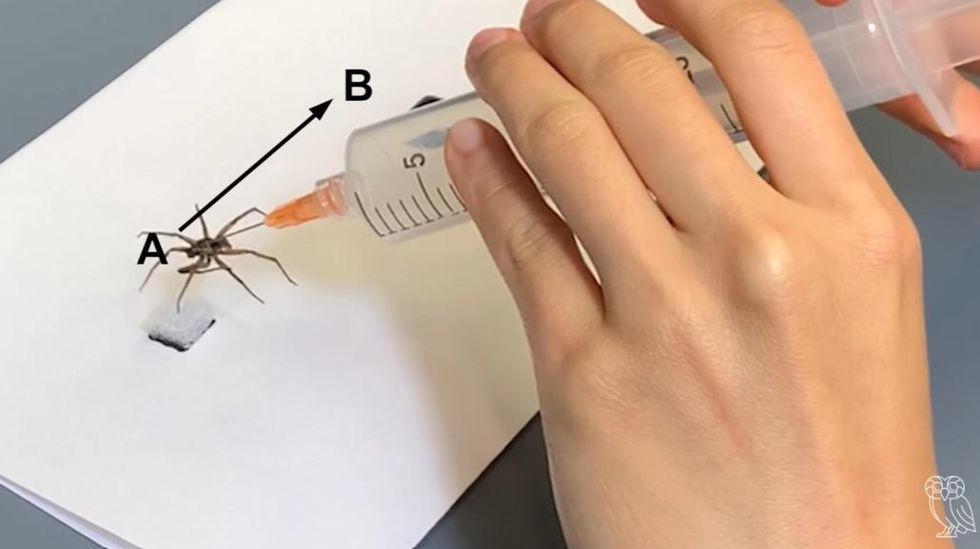Sinead Butler
Jul 27, 2022
'Australian woman has cats as her 'trained bodyguards' to protect the house ...
WooGlobe
The idea of a spider being turned into a robot sounds like something straight out of a nightmare or horror movie but that's it's now a reality as engineers have discovered how to turn dead spiders into mechanical grippers.
(Those with Arachnophobia may want to read elsewhere...)
Researchers at Rice University deliver air to reach the legs so it could extend them and grip objects - and turns out that with this manipulation the deceased wolf spiders can pick up objects that outweigh them in what has been described as "necrobotics."
Sign up to our free Indy100 weekly newsletter
“It happens to be the case that the spider — after it’s deceased — is the perfect architecture for small-scale, naturally derived grippers, Daniel Preston of Rice’s George R. Brown School of Engineering said in a press release.
Instead of using plastic and metals, non-traditional materials are often used in Preston's lab which specialises in soft robots.
"This area of soft robotics is a lot of fun because we get to use previously untapped types of actuation and materials," Preston said.
"The spider falls into this line of inquiry. It’s something that hasn't been used before but has a lot of potential."
Spiders differ from humans in that they use hydraulics to move about. Their limbs extend as a result of the internal valves in the spider's hydraulic chamber near their heads contracting to send blood to the limbs and once the pressure is gone, the legs contract.
The air gets into the spider's legs via a needle through to the prosoma chamber secured with glue while test rigs or a handheld syringe at the other end of the needle to delivers air to get the legs going.

But why research spiders in the first place?
Well, the team's endeavour into the eight-legged friends began when they were moving stuff around in the lab as they noticed a dead spider and were "really curious as to why spiders curl up after they die."
“Spiders do not have antagonistic muscle pairs, like biceps and triceps in humans,” lead author Faye Yap said.
“They only have flexor muscles, which allow their legs to curl in, and they extend them outward by hydraulic pressure. When they die, they lose the ability to actively pressurize their bodies. That’s why they curl up."
Yap added that the team want to "find a way to leverage this mechanism."
While it sounds like the spider has come back from the dead in true Frankenstein style, Preston insisted that "the dead spider isn’t controlling these valves," the team are.
"Despite looking like it might have come back to life, we’re certain that it’s inanimate, and we’re using it in this case strictly as a material derived from a once-living spider."
Phew, we don't have to think about the world being taken over by zombie robot spiders then.
Have your say in our news democracy. Click the upvote icon at the top of the page to help raise this article through the indy100 rankings.
Top 100
The Conversation (0)














